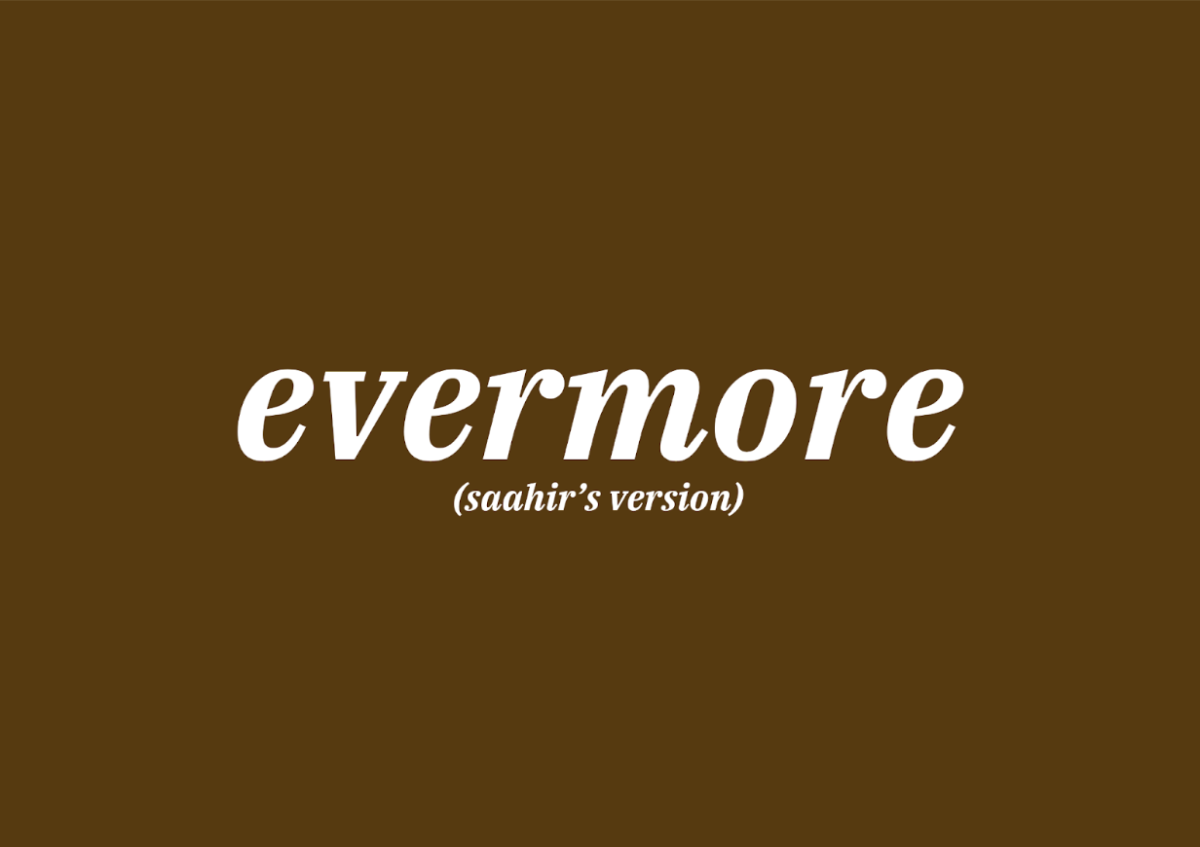Following the immense success of her first pandemic surprise-album, “folklore,” Taylor Swift announced the midnight release of “evermore” on Dec. 10, 2020. Swift said she “couldn’t stop writing songs,” leading to the release of this album. This album marked a strict counter to her traditional form, which was pivoting both aesthetics and the audio landscape created in the past era.
In her album announcement for “folklore,” Swift described it as an album full of stories, curated not from her experiences, but fictional tales she has dreamed up. However, with the second release, Swift alludes to a potential incorporation of her everyday experiences, saying “I loved the escapism I found in these imaginary/not imaginary tales.”
Top standard songs
Since this album has only two bonus tracks, I chose my top five songs from the standard edition of her second pandemic album. This album sets itself apart from the summer release, as its “older sister” was highlighted in the love triangle, but “evermore” is full of individual stories collected into one album.
“gold rush”
“gold rush” explains exactly how it feels to fall in love: “Gleaming, twinkling, eyes like sinking ships on water so inviting, I almost jump in.” The ethereal sound of the intro pivots quickly to a short, rhythmic tune filled with lyrics admiring the beauty of a person’s love and the annoyance at having to keep it secret. The line “everybody wonders what it would be like to love you” shows how much it pains Swift to keep her love a secret, and not getting to make it known that her love is her’s.
The chorus further echoes that statement, asking her love, “What must it be like? To grow up that beautiful, with your hair falling into place like dominoes.” I couldn’t agree more. In this song, Swift perfectly captures the essence of love, a feeling that goes hand-in-hand with the steady beat of the bass drum, matching the rapid steady beat of one’s heart when seeing the person they like. I’ve gotten the chance to experience this, watching the people around me in their respective relationships. Whether that be watching my parents sit next to each other on the couch looking like they fell in love yesterday, or some of my closest friends talking about their new crush; all scenarios remind me directly of this song.
“tolerate it”
“tolerate it” pivots from the feeling of love in “gold rush,” and depicts the demise of what was once a beautiful love story. This song can be applied to a plethora of situations, despite the standout story describing a romantic tale. Many of the metaphors made in this song can be used as applications to a person’s daily life. The song begs, “Tell me I’ve got it wrong somehow,” pleading for the listener to put a stop to the anxious thoughts held by Swift. The bridge is a callback to the “folklore” lyric in “invisible string,” where Swift says someone “wrapped all of [her] past mistakes in barbed wire,” now asking “Where’s that man who’d throw blankets over barbed wire,” showing that the person who initially created that bond with Swift had now disappeared, leaving Swift on the sidelines.
“champagne problems”
One of the most popular songs, “champagne problems,” describes a tale of a couple where one partner wants to take the next step and the other (Swift) prepares to exit the relationship. The bridge of the album has grown to be one of Swift’s most popular, leading a speech before the song on her record breaking “Era’s Tour.” The 40-second bridge recounts the moments of Swift’s relationship and having to say goodbye to their “evergreen group of friends.”
Swift also explains how she truly was never ready for the next step in their relationship, something she didn’t realize until the moment of her proposal. The ending piano riff brings the listener back to the first line, reminding me of musical artists that play their instrument waiting for their train.
It may very well be the intense Swiftie in me, but I imagine this song taking place over two different terminals in New York’s Grand Central Station. One terminal has Swift playing the piano, and the other with the heartbroken fiancé-to-be, sitting with his family. I have not experienced a broken engagement, yet these lyrics are arranged so masterfully that I imagine the entire narrative unfolding behind my closed eyes. This song’s lyricism and composition has struck a chord with me since its release. I was truly shaken up by it, showing me just the surface of what the song would truly mean to me.
“marjorie”
A song reminding me of an unfortunate reality, “marjorie” is the story of Swift’s grandmother, and how she is still coping with the loss of her life. While I have not lost a grandparent, my grandfather’s hospitalization made this song help me both materialize my own words and further understand the grief of the people around me. The song opens with a lesson from the titular character, “Never be so kind, you forget to be clever. Never be so clever, you forget to be kind.”
The moral lessons from Swift shared by her grandmother are a continuous theme in the song, strewn between Swift saying, “If I didn’t know better, I’d think you were still around.” This makes up the song, until the bridge, in which Swift reminisces over the moments she lost, moments she could never get back with her grandmother and the moments that she’ll hold forever close to her.
“ivy”
My first favorite song from this album, “ivy” describes the tale of a traditional forbidden romance. The chipper folk tune contradicts the lyrics, describing how, despite the external forces keeping them apart, her “house of stone” still stands. At the same time, his “ivy grows” and now “[she’s] covered in [him].” While this song is not always recognized as a fan favorite, I have grown to love it for the sheer fact that I now sing the lyrics without realizing. The specific bridge has become one of my favorites that Swift has written, with the lyrics using perfect high school romantic banter, blaming the other person for the romantic chaos that has ensued. This song was my first “stan” song, with the lyrics weaving together the scenes from the songs and bringing me to realize the masterpiece that is Swift’s lyricism.
Bonus songs
“right where you left me” is a tale of having to accept when something is over, but being forced to sit with the fallen memories. This song holds analogy after analogy, going from “Matches burn, after the other” to “the girl who got frozen, time went on for everybody else.” All of these have a sense of being left behind, a feeling many people can unfortunately relate to. It represents Swift as a doll, left at a certain restaurant by the owner where she was forgotten, eventually collecting dust. This song strikes a resounding chord with me, being the youngest sibling in the family. I’ve always viewed myself as “the girl who got frozen,” watching my older brother leave for college, while I sat “still at the restaurant.”
“it’s time to go” analyzes the last song in the album. This story is another tale about the grief of friendships, and coping with the loss of people who you were once so close with. If I had to pick one lyric from that album, it would be one allegedly alluding to Swift’s ex-friend, Karlie Kloss: “when the words of a sister, come back in whispers that prove she was not, in fact what she seemed, not a twin from your dreams, she’s a crook who was caught.”




